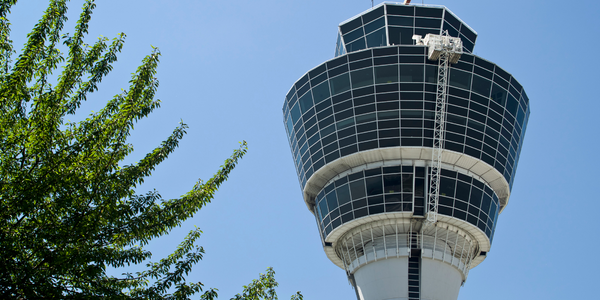Texas A&M University Transit: Addressing Efficiency and Customer Service Needs
Company Size
1,000+
Region
- America
Country
- United States
Product
- TripSpark CAD/AVL
- TripSpark Scheduling Software
- TripSpark MDTs
- TripSpark Automatic Passenger Counters
Tech Stack
- CAD/AVL
- Scheduling Software
- MDTs
- Automatic Passenger Counters
Implementation Scale
- Enterprise-wide Deployment
Impact Metrics
- Cost Savings
- Customer Satisfaction
- Productivity Improvements
Technology Category
- Analytics & Modeling - Real Time Analytics
- Functional Applications - Fleet Management Systems (FMS)
- Functional Applications - Remote Monitoring & Control Systems
Applicable Industries
- Education
- Transportation
Applicable Functions
- Business Operation
- Logistics & Transportation
Use Cases
- Fleet Management
- Predictive Maintenance
- Real-Time Location System (RTLS)
- Remote Asset Management
Services
- Software Design & Engineering Services
- System Integration
- Training
About The Customer
Texas A&M University is one of the largest universities in the United States, covering over 5,000 acres and hosting over 63,000 students. The College Station campus operates like a small city, with a transit system that includes 97 buses running on 18 routes both on and off campus. The transit system serves not only the university's students and staff but also the general population of College Station. The university's transportation services are the 6th largest transit operation in Texas, transporting an average of 50,000 passengers on a typical fall or spring semester day. The transit system plays a crucial role in the daily operations of the university, ensuring that students, staff, and the public can move efficiently across the expansive campus and surrounding areas.
The Challenge
Texas A&M University faced several challenges with its transit system, including the need to adjust services to avoid running empty buses, splitting shifts on short notice, and reducing complaints from riders. The university's transit system, which serves a large student population and the general public, required a more efficient operation to manage the fluctuating demand for service during off-peak periods, such as evenings, weekends, and holidays. Additionally, the majority of the transit drivers were students, necessitating flexible rostering to accommodate their schedules. The university also needed to improve on-time performance and provide riders with real-time information to reduce outdoor wait times and enhance overall rider satisfaction.
The Solution
To address the challenges, Texas A&M University implemented several solutions using TripSpark's technologies. The university utilized TripSpark's CAD/AVL and scheduling software, MDTs, and automatic passenger counters to manage their fixed route operations more effectively. By leveraging ridership data, the university was able to intelligently adjust evening, weekend, and holiday services, reducing driver hours without negatively impacting ridership. This approach allowed the university to redeploy driver hours and maintain excellent service levels without the need for additional buses. Additionally, the use of drag-and-drop rostering enabled the university to easily manage the schedules of student drivers, accommodating shorter and split shifts. Real-time dispatching and the provision of real-time bus location information to riders helped improve on-time performance and reduce outdoor wait times, leading to fewer complaints and higher rider satisfaction.
Operational Impact
Quantitative Benefit

Case Study missing?
Start adding your own!
Register with your work email and create a new case study profile for your business.
Related Case Studies.

Case Study
Airport SCADA Systems Improve Service Levels
Modern airports are one of the busiest environments on Earth and rely on process automation equipment to ensure service operators achieve their KPIs. Increasingly airport SCADA systems are being used to control all aspects of the operation and associated facilities. This is because unplanned system downtime can cost dearly, both in terms of reduced revenues and the associated loss of customer satisfaction due to inevitable travel inconvenience and disruption.

Case Study
IoT-based Fleet Intelligence Innovation
Speed to market is precious for DRVR, a rapidly growing start-up company. With a business model dependent on reliable mobile data, managers were spending their lives trying to negotiate data roaming deals with mobile network operators in different countries. And, even then, service quality was a constant concern.

Case Study
Digitize Railway with Deutsche Bahn
To reduce maintenance costs and delay-causing failures for Deutsche Bahn. They need manual measurements by a position measurement system based on custom-made MEMS sensor clusters, which allow autonomous and continuous monitoring with wireless data transmission and long battery. They were looking for data pre-processing solution in the sensor and machine learning algorithms in the cloud so as to detect critical wear.

Case Study
Cold Chain Transportation and Refrigerated Fleet Management System
1) Create a digital connected transportation solution to retrofit cold chain trailers with real-time tracking and controls. 2) Prevent multi-million dollar losses due to theft or spoilage. 3) Deliver a digital chain-of-custody solution for door to door load monitoring and security. 4) Provide a trusted multi-fleet solution in a single application with granular data and access controls.

Case Study
Vehicle Fleet Analytics
Organizations frequently implement a maintenance strategy for their fleets of vehicles using a combination of time and usage based maintenance schedules. While effective as a whole, time and usage based schedules do not take into account driving patterns, environmental factors, and sensors currently deployed within the vehicle measuring crank voltage, ignition voltage, and acceleration, all of which have a significant influence on the overall health of the vehicle.In a typical fleet, a large percentage of road calls are related to electrical failure, with battery failure being a common cause. Battery failures result in unmet service agreement levels and costly re-adjustment of scheduled to provide replacement vehicles. To reduce the impact of unplanned maintenance, the transportation logistics company was interested in a trial of C3 Vehicle Fleet Analytics.

Case Study
3M Gains Real-Time Insight with Cloud Solution
The company has a long track record of innovative technology solutions. For example, 3M helps its customers optimize parking operations by automating fee collection and other processes. To improve support for this rapidly expanding segment, 3M needed to automate its own data collection and reporting. The company had recently purchased the assets of parking, tolling, and automatic license plate reader businesses, and required better insight into these acquisitions. Chad Reed, Global Business Manager for 3M Parking Systems, says, “With thousands of installations across the world, we couldn’t keep track of our software and hardware deployments, which made it difficult to understand our market penetration.” 3M wanted a tracking application that sales staff could use to get real-time information about the type and location of 3M products in parking lots and garages. So that it could be used on-site with potential customers, the solution would have to provide access to data anytime, anywhere, and from an array of mobile devices. Jason Fox, Mobile Application Architect at 3M, upped the ante by volunteering to deliver the new app in one weekend. For Fox and his team, these requirements meant turning to the cloud instead of an on-premises datacenter. “My first thought was to go directly to the cloud because we needed to provide access not only to our salespeople, but to resellers who didn’t have access to our internal network,” says Fox. “The cloud just seemed like a logical choice.”


